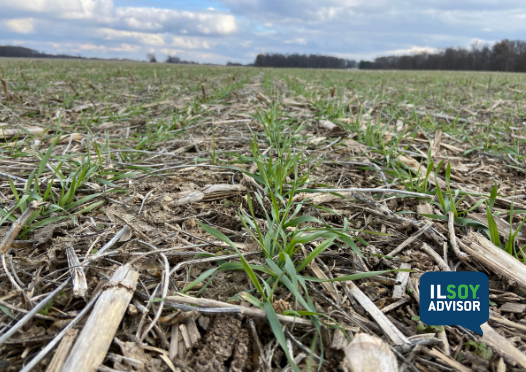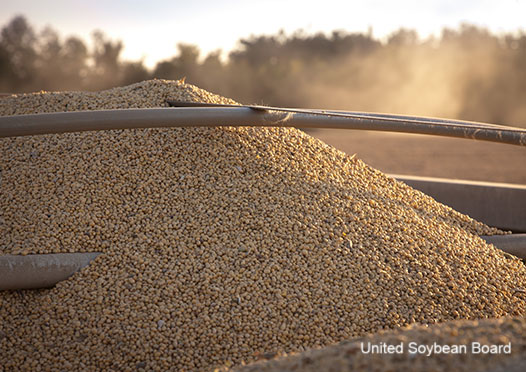Resolution Realization
Photos taken before the smartphone era have significantly lower quality and resolution than what’s possible with the latest mobile devices. Modern smartphone cameras can capture extensive details that could never be seen from a pixelated flip phone camera. Similarly, you may have noticed this increase in resolution if you’ve ever switched soil sample grid size. By increasing your sample resolution, you can see a much... Read More →
ILSOYADVISOR POST
WEBINAR: PGR's - The Missing Link to Next Level Soybean Yield
July 14, 2020
Learn how progressive farmers are managing their crops using plant growth regulators in combination with proper nutrition at critical crop stages from planting to harvest to break through yield barriers and realize greater yield potential. Participants will also gain a deeper understanding of the importance of managing the yield-limiting effects of abiotic crop stress throughout the season. Register for the webinar here.
1 CEU in Crop Management
Presenters: Dale Hanke and Ryan Miller, Stoller
- Plant Growth Regulator
- Right Regulator at the right time and the right rate
- Phytohormones – multicellular organisms like plants need to communicate efficiently
- PGRs are needed in very small amounts but are critical to:
- Proper plant growth
- Yield potential
- Crop quality
- Under optimum conditions crops produce a lot of hormones on their own, but need to be in balance
- Balance is key between the 5 essential plant hormones and their impact on yield
Key Plant Hormones
- Growth hormones: auxin, cytokinin, gibberellic acid
- Stress hormones: abscisic acid, ethylene
- Auxin – the growth hormone
- Produced in actively growing shoot tissues
- Affects cell division and differentiation
- Regulates the elongation of plant
- Cytokinin – regulator of cell division
- Synthesized in roots, in developing embryos, young leaves, and fruit tissue
- Transported passively through xylem
- Participates in the regulation of many plant processes including:
- Cell division
- Cell enlargement
- Senescence
- Gibberellic Acid – regulator of plant height
- A large group of 125+ related compounds
- Promote stem growth, cell elongation, internode, and stem elongation
- Induces germination
- For corns, oat, wheat, rice – gibberellic acid will play a crucial role in elongation
- Cytokinin to Auxin Relationship/Ratio
- The ratio of auxin to cytokinin determines the differentiation of plant tissue to either root formation or bud formation during vegetative stages
- High ratio of Auxin promotes root formation
- Low ratio of Auxin promotes bud formation
- The ratio of auxin to cytokinin determines the differentiation of plant tissue to either root formation or bud formation during vegetative stages
- Abscisic Acid – seed maturation and antistressor signal
- Promotes ripening, abscission and seed dormancy
- Moves rapidly in the plant in response to stress
- Transported in xylem and phloem
- Close leaf surface to preserve moisture
- Can be applied with herbicides to reduce herbicide stress
- Ethylene – the gaseous hormone
- Produced under stress conditions as a signal to begin ripening
- Can cause premature senescence and death if in excess
- Influences all other hormones
Plant Nutrition
- Von Leibig’s Law
- The nutrient that has the least availability will limit yield
- Small amounts of foliar applied nutrients can have huge yield effects
- Zinc is the number one most common deficiency as a whole and is helpful in the beginning of the season to help germination
- Potassium is very important at the reproductive phase – helps move and translocate sugars so that the plant has everything it needs to produce large pods
- The #1 Yield-Limiting Factor
- Accumulated stress can cause losses of 70% of the total yield potential
- Stress mitigation and understanding stress physiology
- Heat Shock Proteins – produced when a plant goes through a period of heat stress. Prevents cell membrane leakage and losses within plant’s cellular structure to protect plant long enough to create a seed
- It takes time and energy to combat this heat stress, reducing the energy that could go into grain fill
- Biotic Stress – occurs as a result of damage done by living organisms (bacteria, fungi, insects, parasites, nematodes, weeds, etc.)
Abiotic stress – the negative impact of non-living factors (extreme temperatures, drought, flooding, hail, wind damage, compaction, salinity, nutritional imbalance, herbicide injury)
- Start, Grow, Finish system
- Apply gibberellic acid with seed treatment (or in furrow) at planting
- Manages abiotic stress, induces germination
- Early foliar application of ethylene during 3rd–5th trifoliate
- V3–V5 application
- Manage abiotic stress
- Maintain hormone and nutritional balance
- Finish – Reproductive state application of cytokinin
- Maintain nutritional balance to supply energy
- Optimize sugar movement to pods – maintain cytokinin levels to hold pods
- Apply gibberellic acid with seed treatment (or in furrow) at planting
Summary:
- Maintain vigorous root growth until harvest
- Begin treatments immediately with seed treatment or in-furrow application
- Eliminate any possible limiting factors:
- Nutrient imbalance
- Hormonal imbalance
- Manage abiotic crop stress
- Monitor fields and maintain applications throughout the season as needed.





Comments
Add new comment